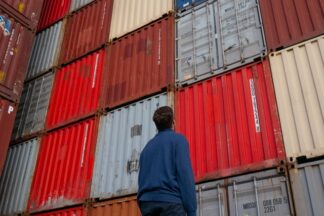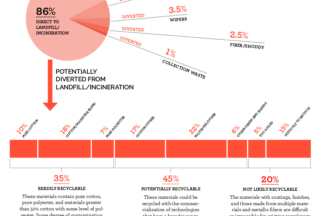This time around I want to make it explicit: If a company is not performing in sustainability terms, it as good as always down to senior leadership. Both, executive leadership – CEO, COO, CFO, CMO,
CSO etc. - as well as non-executive leadership at board level.
For one, arguably simplistic, reason: sustainability deliverables are oversteered by
‘higher priority’ KPIs. And what does mean? Fundamentally, it is down to decisions where the ball stops at the top leadership level.
Do you recognise these scenarios?
This post is part of a series where I look at and into the true cost of certain goods and services. This time I’d like to look into the True Cost of all types Transport and Mobility: road, rail, aviation and water. The question therefore is: What are the total costs – the True Cost, i.e. including what is commonly called ‘externalities’ – of the different types of transport we use globally, both for passengers and for freight? Or if you prefer: how do different types of transport compare to each other when it comes to ‘collateral damage’?
Spoiler alert: It is really quite complex and rather diverse. And: public infrastructure investments and maintenance costs play a significant role in it.
This post is part of a series where I look at and into the true cost of certain goods and services. When in the previous post I looked at subsidies and the True Cost (associated with the True Price) for oil and gas, this time I’d like to look into what we know about the True Cost of Energy. Not just about fossil fuels, but indeed across the breadth of the energy spectrum.
The question therefore is: What are the total costs – the True Cost, i.e. including what is commonly called ‘externalities’ – of the
different types of energy we use globally?
Spoiler alert: It's very interesting - and also a bit suprising and counter-intuitive.
This is the first of a series that will look at and into true cost of certain goods and services. Cash subsidies thereby is one component, but certainly not the only one relevant one – indirect subsidies (e.g. in the form of environmental degradation or similar) need to be considered also. In this particular post, I’d like to focus on Oil & Gas subsidies, fossil fuels' True Cost, and what we know about these. What we already also learn: comparing apples to apples won't be easy.
True Cost calculations are only ever 'best available efforts', and much data remains missing or speculative at best. This is an issue we will encounter again also once we'll look into renewables, or indeed other kinds of industries outside of energy.
The world, by and large, operates based on land-filling. The only way to improve the situation any time soon is: not to landfill. At all. Or at least as little as possible, and that asap.
To that extent, 2 reports on textiles the circular economy have been published, both of which look at the issue from different, and complementary perspectives.
What is it that we can learn from these 2 reports, side by side?
One, the old adage could not be any truer: One Man’s Rubbish is another Man’s Treasure. And: True cost accounting would make a huge difference.
What of all that are buyers aware of, and how do they use it?
This is the second of the two questions for which the most insightful research with fairly hard data has been published by Prof. Doug Miller from Northumbria University in Newcastle. The two most relevant papers in this context are: 'What price a living wage' and 'Towards Sustainable Labour Costing in the Global Apparel Industry'
What do we know about how garment cost is broken down across the supply chain? This is the first of the two questions for which the most insightful research with fairly hard data has been published by Prof. Doug Miller from Northumbria University in Newcastle.
Mid last year, an interesting campaign piece was delivered to my mailbox: London based Offset Warehouse launched a capsule collection of T-shirts retailing at £4.99 (app. Euro 6, plus P&P). Now, the point is, that even if these T-shirt were sold through a major retailer, they would hardly have retailed at more than £10 - and this at a vastly superior quality then is often case.
The wages discussion is far from over. Not 'just' when it comes to the slightly out-of-range bonuses some people in the finance industry, together with a number of high-level executives of other industries, earn. But rather globally, even in 'developed' Western markets. This applies to 'fair wages' for physically handicapped people e.g. the blind, and crosses over to living and minimum wage discussions in the countries such as the UK, the US, or Spain (white collar precariate). The fashion industry would have a lot to tell also in this context.
I had the chance to speak at the Green Business conference last week in Istanbul about future market scenarios for the fashion industry. The conference is an event of the Sustainability Academy in Turkey.
Key highlights from the event
In Europe, SMEs make up 99% of all companies, and provide 67% of employment a much higher percentage of jobs in developing countries.
Research has shown that they generate around 50% of the private sector’s turn over, and that SMEs contribute at least 80% to the national GDPs.
Yet less than 20% of policies, government investments etc. are made with them in mind.
On December 14th, PPR published the expert review report on Puma’s Environmental Profit and Loss Account (E P&L). The panel of experts that had been commissioned to undertake the review brought some of the most eminent names in the industry together, among them John Elkington, Peter Bakker, or Pushpam Kumar.
Can we say that modern businesses prefer long-term over short-term? For sure the business environment is more and more rewarding companies that think ahead and do not fail to consider existing or potential risks. What has happened in finance is striking and is based on the concept that long-term benefits outweigh the short-term pain.
t is fairly old news, but merits repeating nevertheless: our current economy, at the verge of collapse as it is, is egocentric, and at the same time understates costs while overstating benefits.
In other words, it promotes a type of behaviour that is degeneratively competitive: the ‘me’ wants, needs, more of whatever it may be, while anything and everything else is losing out. No matter how high the cost for the bigger picture – society and the planet, that is – may be.
Puma’s executive have recognised some while ago that their company’s profitability and resilience to competition depends not the least on how well they are able to foresee risks in an area normally just referred to as ‘sustainability’. An overview of their tangible results
True Cost Accounting is – while far from sufficient – a step forward in the sustainability discussion, beyond the fashion industry. Let's look hence a bit close into what the three large apparel industry initiatives in this area are really about.
Ture Cost Accounting (TCA) requires the quantification of not only the environmental services of our ecosystem, but also the social benefits corporations rely their activities on. With Puma's Environmental Profit & Loss Accounts, the EcoIndex Beta, and the Higgs Index, the apparel industry is at the leading edge in this area.






